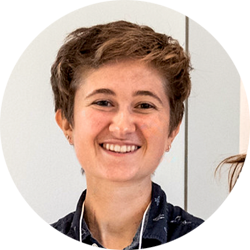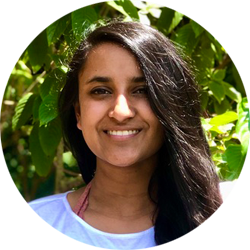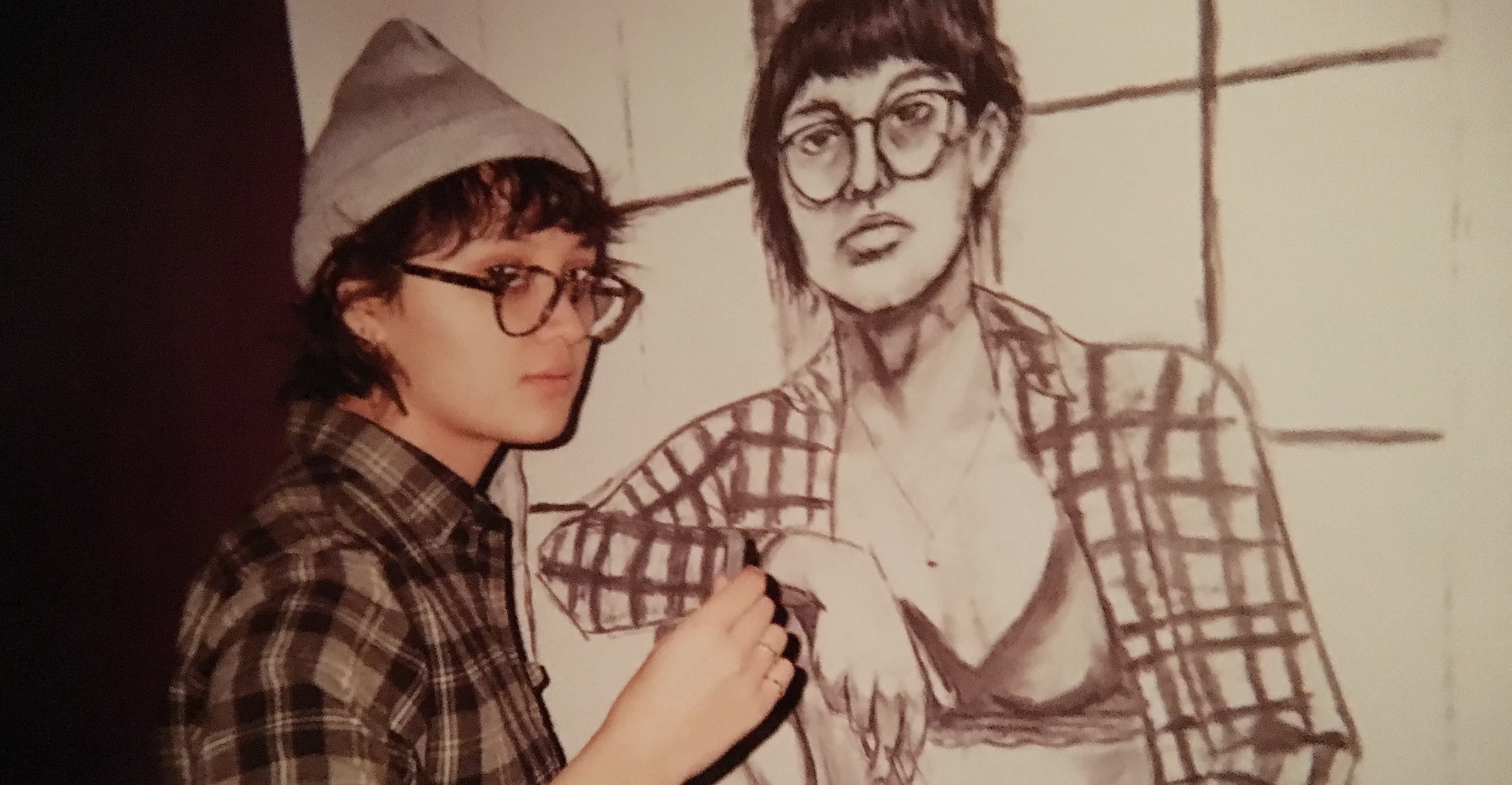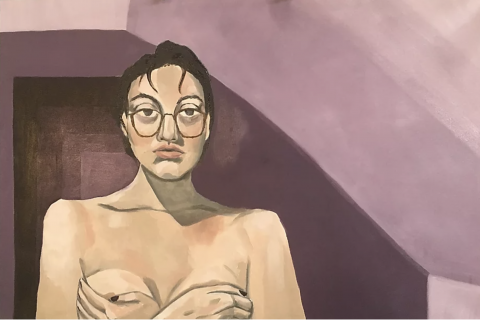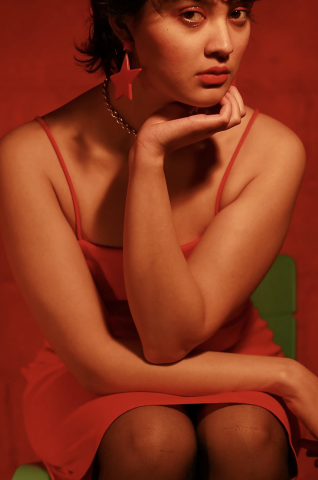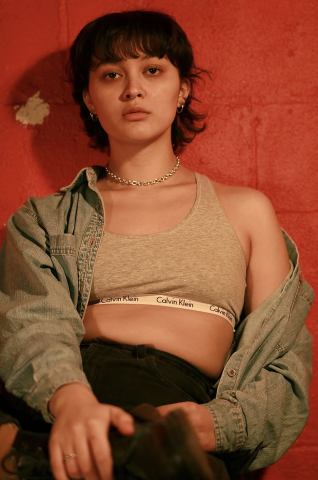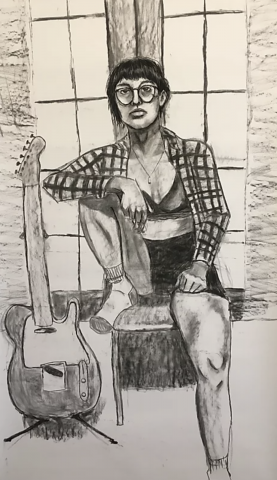Looking deeper into the collection here at UMMA to understand how artists cope and contribute in trying times, we can reflect on the work of Egon Schiele and Edvard Munch. Both Schiele and Munch lived during the Spanish Flu pandemic and Schiele lost his life to the disease shortly after his wife. Schiele, known for his raw figurative paintings, and Munch, most known for The Scream, were deeply artistically impacted by the outbreak. Experts reflect the immense psychological change in their works from the time the pandemic claimed so many lives. This fundamental change in their artistic voice and practice shows us how deeply we are all impacted by global changes. The subtle but robust changes in the tone of work produced by Neshat, Schiele, and Munch mirror Rinaldi’s shift away from the overwhelming work of self-portraiture and self-reflection in our modern time.
For Rinaldi, painting self-portraits is tied to exploring her personal identity. As she puts it, “I’m a half-Filipino, like half-Italian artist” and “my Asian heritage informs my work more… but it’s important to note it like that. I’m only half-Asian.” As an artist in the Asian American community, Rinaldi explored her community's history through coursework and her Asian identity through artwork. She explains that being mixed race in particular is “definitely something that I think I tried to talk about in my work. Because it’s kind of like living in this dual identity because you’re not fully Asian but you’re not fully white. So you’re kind of in this weird in-between where you don’t really feel fully accepted by the Asian community because you’re not fully one of them, like you’re only partially so I feel like growing up a lot of my identity was really caught between these two very different worlds.
Rinaldi remembers her start to portraiture, “at first, it kind of started as a way for me to try and figure out, you know, who I was and what I wanted to be. And I found self-portraiture to be therapeutic at first”. However, she continues,“as I started taking more classes about Filipino-American history and, you know, reading, and talking to my family more about why we immigrated here… it really started to inform my self-portraits more.”
